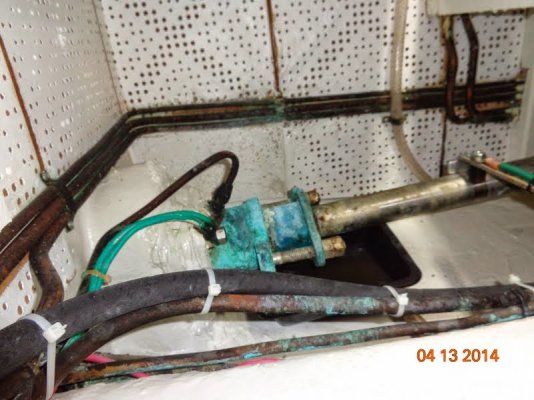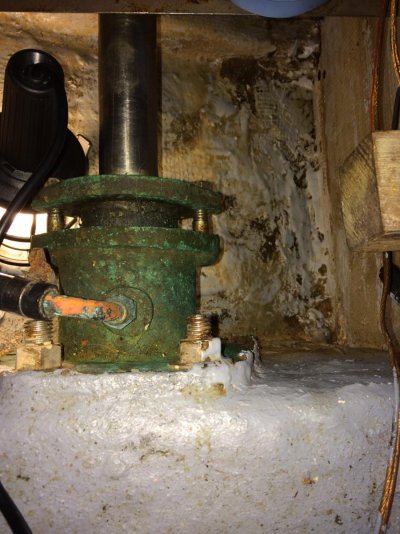angus99
Guru
There are water lines on our boat injecting raw water from the engine exhaust to the stuffing box/cutlass bearing tubes for each shaft. I've been told they are to help prevent crevice corrosion and/or to ensure a water flow through cutlass bearings that are embedded in these shaft housings.
The aft half of each water line is copper (3/8" ID, I believe) and the rest is reinforced potable water hose. One of the copper tubes froze and burst over the winter and I'm planning on replacing both of them. The burst is near the sharp bend in the photo.
Does anyone have a system like this and have you ever replaced the copper with something like PEX? Whatever I use, the bend will have to be kink-proof.
Thanks.
The aft half of each water line is copper (3/8" ID, I believe) and the rest is reinforced potable water hose. One of the copper tubes froze and burst over the winter and I'm planning on replacing both of them. The burst is near the sharp bend in the photo.
Does anyone have a system like this and have you ever replaced the copper with something like PEX? Whatever I use, the bend will have to be kink-proof.
Thanks.




